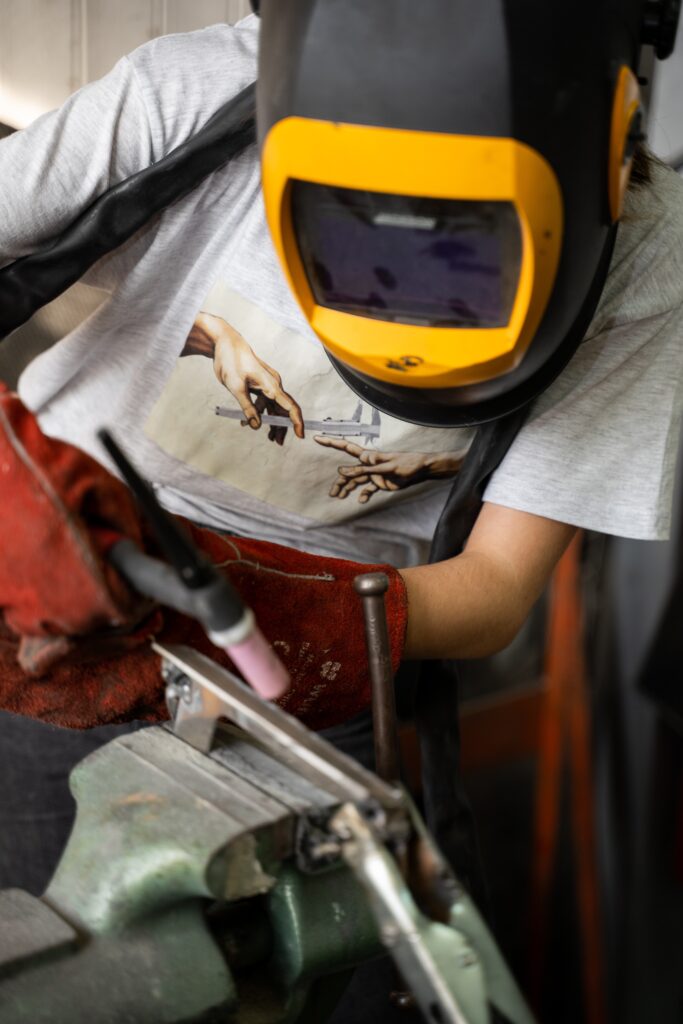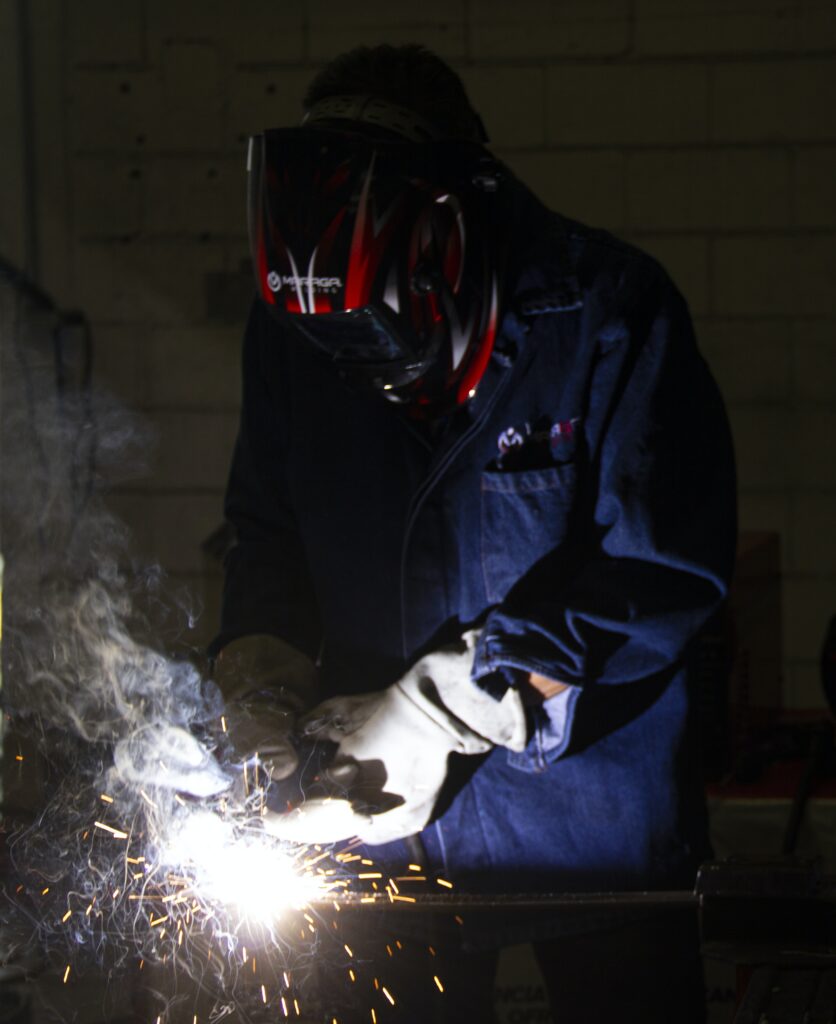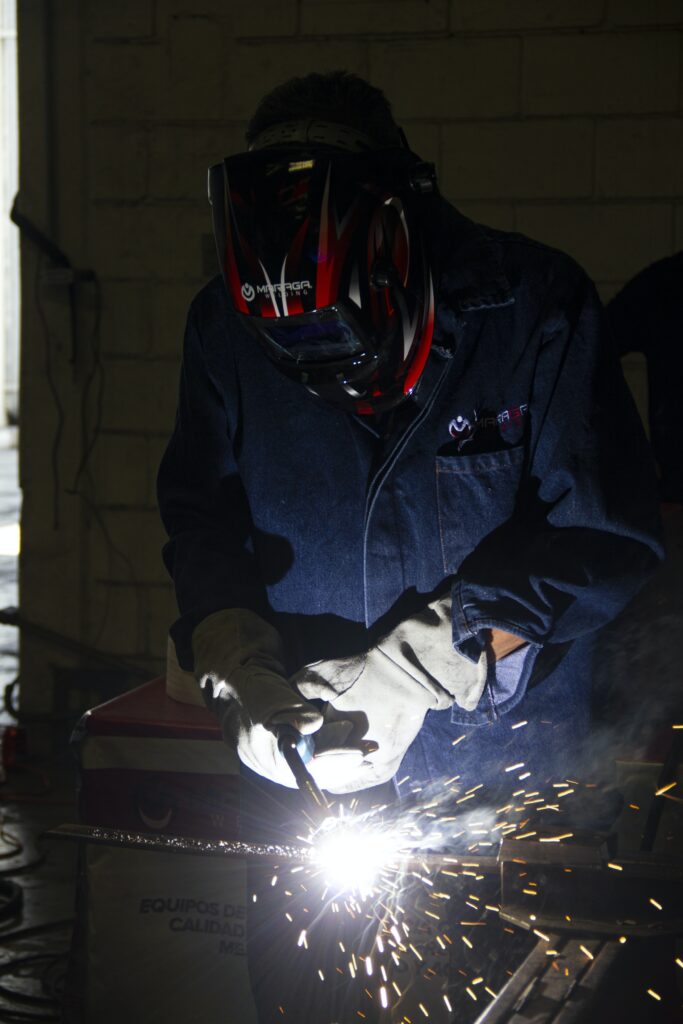This tight-knit article will act as your friendly guide through the journey of becoming a certified welder. You might be on the verge of initiating your career path or considering a change, and a question that may have caught your interest is – Do you undertake an apprenticeship for becoming a certified welder? Not steps back, but a step forward into shaping metal dreams into reality, this article is here to shed light on the path that leads to a successful welding career.
Understanding the Welding Profession
Before delving into the intricacies of becoming a certified welder, it’s important to understand the welding profession as a whole. Welding is the process of joining metals by applying heat, pressure, or both. There’s a lot more to the profession than simply fusing metals together, though. It’s a highly skilled trade that requires a great deal of technical knowledge, precision, and attention to detail.
Defining welding
Welding is an essential process in a wide array of industries such as construction, automotive, aerospace, and more. At the core, welding involves using intense heat to melt and subsequently join similar or dissimilar materials together to form a permanent bond. It’s a critical part of manufacturing, repair, and fabrication work, and the quality of the fusion directly impacts the stability and durability of the overall structure.
Types of welding jobs
The welding profession encompasses a variety of job roles, from entry-level positions to highly specialized roles. The most common types of welding jobs include MIG welders, TIG welders, Stick welders, underwater welders, boiler welders and pipe welders. Each role requires a unique set of skills and techniques, and the choice of which to specialize in would largely depend on your interests, aptitude, and career objectives.
Roles and responsibilities of a welder
Welders play a pivotal role in the industries they work in. Their primary responsibility is to assemble and fabricate structures and equipment by joining parts and workpieces together using various welding techniques like torch welding, resistance welding or plasma arc welding. Welders are tasked with interpreting blueprints and specifications, cutting metal components, maintaining welding equipment, and ensuring all work meets the requisite safety and quality standards.
Certified Welder: What Does It Mean?
Achieving a certification in welding elevates your standing in the profession and opens up new career opportunities. But what does it mean to become a certified welder?
What is a certified welder?
A certified welder is a professional who has undergone rigorous training and has passed industry-recognized certification tests. This certification verifies that the welder possesses the skill set, knowledge, and technical prowess to perform high-quality welds according to industry standards.
Benefits of becoming certified
Certification is often a prerequisite for many advanced welding jobs. Being a certified welder makes you more employable, opens up opportunities for better-paying jobs, and shows employers and clients that you’ve mastered the trade to a high level of competence.
Skills and qualifications required for certification
To become a certified welder, you’ll need to exhibit a high level of skill and technical knowledge. This includes knowledge of welding and metallurgical principles, proficiency in one or more welding processes, and an understanding of industry safety standards. A basic prerequisite is a high school diploma, although having a diploma or degree in welding technology can be an advantage.

Overview of Welding Apprenticeships
Welding apprenticeships serve as a stepping stone to becoming a certified welder by providing hands-on training and experience.
Definition of an apprenticeship in welding
A welding apprenticeship is a form of vocational training where you work under the guidance of an experienced mentor. It combines practical, on-the-job training with classroom-based learning, equipping you with the skills and knowledge to become a competent welder.
Length and structure of apprenticeships
Welding apprenticeships typically last between three and four years. During this period, you’ll spend most of your time on-the-job, learning and applying various welding techniques. But it’s not all practical work; there’s also extensive theoretical learning, usually accomplished through related classroom instruction.
Role of a welding apprentice
As a welding apprentice, you’ll assist experienced welders and perform a variety of tasks under their supervision. This can include preparing materials for welding, maintaining equipment, and performing simple welding duties. Over time, and as your skills grow, you’ll take on more complex tasks and undertake independent welding projects.
Benefits of Apprenticeships for Welder Certification
A welding apprenticeship, while not a mandatory prerequisite for certification, offers several significant benefits.
Hands-on experience gained
Through an apprenticeship, you gain valuable, hands-on experience and practical skills. Unlike learning solely in a classroom setting, an apprenticeship allows you to apply what you’ve learned in real-world scenarios, thus honing your technique and enhancing your understanding of the trade.
Mentorship and training from professionals
One of the key benefits of an apprenticeship is the opportunity to learn directly from experienced welders. This mentorship and training from professionals can be invaluable in developing your welding skills and gaining insights into the industry.
Opportunity to earn while learning
Another unique benefit of apprenticeships is that they offer the chance to earn a modest wage while learning. This helps to offset the costs of living and may even contribute to subsequent tuition fees if you choose to further your formal education in welding.

Finding a Welding Apprenticeship Program
Finding the right apprenticeship program is essential to set you on the path towards becoming a certified welder.
Options for apprenticeship programs
There are several types of apprenticeship programs available in the field of welding. This includes programs offered by trade unions, community colleges, vocational schools, and even some employers. The best choice for you will depend on your circumstances, goals, and the specific skills you wish to develop.
What to look for in a program
When evaluating an apprenticeship program, consider the curriculum, the duration of the program, the qualifications of the instructors, and the opportunities for on-the-job training. Also, check if the program helps you prepare for the certification test.
How to apply
Once you’ve chosen a program, the application process typically involves submitting an application and a resume, attending an interview, and possibly passing an aptitude test or pre-apprenticeship course.
Requirements for Welding Apprenticeship Programs
While specific requirements can vary between programs, there are some general qualifications and skills you’ll need to be considered for an apprenticeship.
General requirements to enroll
General requirements usually include having a high school diploma or equivalent and being 18 years old. Some programs might also require you to hold a valid driver’s license and undergo drug testing.
Specific skills needed
Certain programs may expect you to have basic math and mechanical skills, have physical stamina and hand-eye coordination, and some understanding of welding principles, although real-world welding experience is typically not required.
Potential costs involved
While many apprenticeships pay a stipend, there may be associated costs like tuition fees for the educational portion, personal protective equipment, and supplies. Some programs may cover these costs, while others might expect you to foot the bill.

Experience of A Typical Day as a Welding Apprentice
A typical day as a welding apprentice involves a balance of practical experience and learning.
Day-to-day tasks for apprentices
Most of your day as an apprentice will revolve around practical work under the supervision of an experienced welder – cutting and trimming metal objects, preparing materials for welding, and performing simple welds or soldering tasks. You may also have duties related to the maintenance and cleaning of welding equipment.
Working conditions and environment
You’ll likely be working in environments like workshops, construction sites, and factories, thus potentially exposed to hazards like heat, noise, and fumes. Safety is crucial in welding, and part of your day will be understanding and adhering to all necessary safety protocols.
Interaction with mentors and team
Regular interaction with your mentor and collaborating with the rest of the team is crucial in an apprenticeship. It enhances your learning experience, improves your teamwork skills, and you’ll also benefit from the experience and feedback from your more experienced coworkers.
Transition from Apprentice to Certified Welder
Completing an apprenticeship is a significant step towards becoming a certified welder.
Steps after completing an apprenticeship
After completing an apprenticeship, you may choose to work as a welder to get more experience or go straight into preparing for your certification tests.
Taking the certification test
Certification exams test your abilities in practical welding tasks and your theoretical knowledge in various welding processes, safety standards, metallurgy, and blueprint reading. Passing these tests will grant you certification from an accredited board, validating your abilities to potential employers.
Starting a career as a certified welder
With your certification in hand, you’re equipped to begin your career as a certified welder. Depending on your goals, you could seek employment in a variety of settings like factories, construction companies, automotive industries, shipyards, and more.
Career Opportunities for Certified Welders
Being a certified welder exposes you to vast opportunities in many industries.
Job market for certified welders
Certified welders are in demand in many industries, and the job market generally offers favorable opportunities. However, like any profession, market conditions can fluctuate based on the economy, development projects, and technological advancements in welding.
Industries that hire certified welders
Numerous industries employ certified welders. These include manufacturing, construction, shipbuilding, aerospace, automotive, and energy sectors. Each provides unique challenges and opportunities, so choosing where to work will depend on your interests and career goals.
Career growth and advancement
Becoming a certified welder also opens the door to career advancement within the welding industry. With more experience, you could progress to roles like welding supervisor, inspector, or instructor. Alternatively, you might opt to specialize in a specific area of welding or even start your own welding business.
Continuing Education and Specializations in Welding
Like any profession, continuous learning is key to long-term success and progress in welding.
On-going learning in the welding field
Keeping up-to-date with new techniques, technologies, and safety standards is crucial for staying relevant in the field. Workshops, seminars, and courses offered by trade organisations and educational institutions are valuable resources for continued learning.
Areas for specialization
Welding offers ample opportunity for specialization in various techniques like shielded metal arc welding, flux-cored arc welding, gas metal arc welding, and more. Specializing might involve further training and certification but can make you more valuable to employers.
Additional certifications and training
Continuing to expand your skills and acquiring additional certificates can further enhance your opportunities. This could involve becoming certified in specialized welding techniques, in inspection or supervisory roles, or even in related skills like drafting or metallurgy.
In conclusion, becoming a certified welder, though demanding, is a rewarding journey. By understanding the role of welding apprenticeships and taking on the challenge of certification, you can establish a satisfying career in the welding profession. Continuous learning and specialization will further open doors for growth within this versatile and vital industry.
